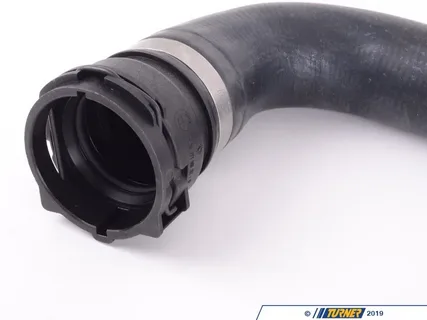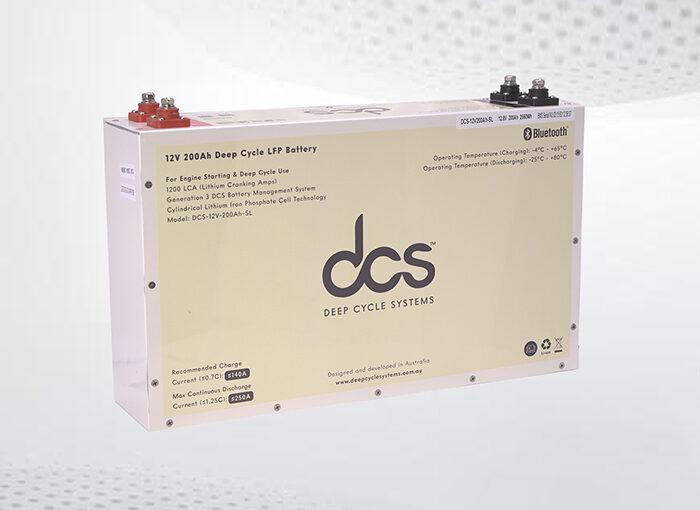If you own a BMW, you know the importance of regular maintenance to keep your car running smoothly. One crucial component to pay attention to is the BMW Coolant Vent Hose. In this blog post, we will discuss the function of the Coolant Hose, common symptoms of a failing hose, factors to consider when choosing a replacement, how to replace it, maintenance tips, where to purchase high-quality hoses and conclude with the importance of keeping your coolant system in top condition. Understanding the role of the Coolant Hose is essential as it ensures the efficient circulation of coolant, preventing your engine from overheating.
Understanding the Function of the N54 Coolant Hose
The Coolant Vent Hose is pivotal in efficiently operating your vehicle’s cooling system, particularly in models equipped with the N54 engine. This specialised hose is engineered to serve a dual-purpose function crucial for the health and efficiency of the engine. Firstly, it allows for the seamless escape of air trapped within the cooling system as the engine reaches operating temperatures. This evacuation of air is vital as it prevents the formation of air pockets that can significantly hinder the cooling system’s ability to regulate engine temperature effectively.
Secondly, the hose is designed to prevent air ingress into the system as it cools down. This is equally important as introducing air back into the system can lead to pressure imbalances and, subsequently, the inefficient cooling of the engine. These functions together ensure that the cooling system maintains an optimal pressure balance, which is crucial for preventing engine overheating and ensuring the longevity of the engine components.
The N54 Coolant Hose is tailored specifically for BMW models with the N54 engine, reflecting BMW’s commitment to precision engineering and optimal vehicle performance. Its design considers the unique requirements of the N54 engine, ensuring it integrates seamlessly with the engine’s cooling system components. This specificity underscores the importance of selecting a coolant vent hose that matches your BMW’s engine type, ensuring the cooling system operates efficiently and reliably under various driving conditions.
Common Symptoms of a Failing Coolant Vent Hose
The coolant vent hose is critical in maintaining your vehicle’s engine temperature. It allows the coolant to circulate and prevents air from getting trapped in the cooling system. When this hose starts to fail, it can lead to various issues that could jeopardise your engine’s health. Here are the common symptoms to watch out for:
1. Overheating Engine
One of the most immediate and noticeable symptoms of a failing coolant vent hose is an overheating engine. If the hose is cracked, blocked, or disconnected, it may not properly vent air from the cooling system. This leads to an airlock, preventing coolant from circulating efficiently and causing the engine to overheat.
2. Coolant Leaks
A failing hose often results in coolant leaks. If you notice puddles of coolant under your vehicle or a drop in coolant levels, the vent hose could be the culprit. This issue must be addressed quickly, as a low coolant level can lead to severe engine damage.
3. Air Bubbles in the Coolant Reservoir
When the coolant vent hose isn’t functioning properly, air bubbles may appear in the coolant reservoir. This indicates that air is trapped in the cooling system, preventing proper coolant flow and potentially leading to overheating.
4. Unusual Engine Noises
A failing coolant vent hose can also cause gurgling or hissing noises from the engine. These sounds often indicate trapped air within the cooling system, leading to irregular coolant flow and engine overheating.
If you observe any of these symptoms, having your coolant vent hose inspected and replaced is crucial.
Factors to Consider When Choosing a Replacement Hose
Selecting the appropriate Coolant Vent Hose for your BMW requires careful consideration of several key factors to ensure optimal performance and compatibility with your vehicle. Firstly, the hose’s material is paramount. Options such as silicone or high-grade reinforced rubber offer superior durability and resistance to the extreme temperatures and pressures encountered within the cooling system. These materials are less prone to cracking and deterioration over time than their lower-quality counterparts, providing a longer service life and better value for your investment.
Compatibility is another critical aspect. The replacement hose must be specifically designed for your BMW model and, more importantly, for the particular engine type you have. This ensures that the hose fits correctly, eliminating potential issues such as improper seal connections or hose length discrepancies, which can impact the cooling system’s efficiency.
Additionally, consider the manufacturer’s reputation. Opt for brands known for their commitment to quality and precision engineering. A well-regarded manufacturer is likelier to produce hoses that meet or exceed the original equipment manufacturer (OEM) standards, ensuring that your cooling system functions as efficiently as the day your car rolls off the assembly line.
Lastly, while price is an important factor, it should not be the primary consideration. A cheaper hose might save upfront costs but could lead to more expensive repairs if it fails prematurely. Investing in a high-quality Coolant Vent Hose can save money and headaches in the long run by providing reliability and peace of mind.
Replacing Your Coolant Vent Hose
Embarking on replacing the Coolant Vent Hose in your BMW requires preparation and attention to detail to ensure the process goes smoothly. Ensure the engine is cool to avoid injuries from hot components or fluids. Depending on your BMW model, locate the coolant vent hose, which is typically connected to the radiator and engine block or cylinder head.
The next step involves draining the existing coolant from the system to prevent spills when you remove the hose. This is usually done by locating the drain valve at the bottom of the radiator and placing a suitable container underneath to catch the coolant. Remember, it’s important to dispose of or recycle the old coolant in an environmentally responsible way.
Once the coolant is drained, use the appropriate tools to carefully remove the clamps or fasteners holding the hose in place. Gently twist and pull the hose off the connection points. If the hose is stuck due to age or heat exposure, a hose removal tool can be beneficial to break the seal without damaging the fittings.
Before installing the new Coolant Vent Hose, check the hose fittings on the engine and radiator for any signs of corrosion or damage that might compromise the new hose’s effectiveness. Clean the fittings as necessary to ensure a good seal.
Install the new hose by pushing it onto the fittings until it’s fully seated, then secure it with the clamps or fasteners, ensuring they are tight but not over-tightened to avoid damaging the hose. Refill the cooling system with the appropriate type and amount of coolant for your BMW model, then bleed the system according to the manufacturer’s instructions to remove any air pockets. This step is crucial for the proper operation of the cooling system.
After completing the installation, start the engine and allow it to reach operating temperature, check for leaks, and monitor the temperature gauge to ensure the system functions correctly. If everything looks good, you have successfully replaced your BMW’s Coolant Vent Hose, contributing to the longevity and reliability of your vehicle’s cooling system.
Maintenance Tips to Extend the Life of Your Bmw Icom Cable
The BMW ICOM (Integrated Communication Optical Module) cable is a vital tool for diagnostics and programming. Proper maintenance can significantly extend its lifespan, saving you time and money on replacements. Here are some essential tips to keep your ICOM cable in top condition.
1. Handle with Care
Always handle the ICOM cable with care to prevent any physical damage. Avoid pulling or yanking the cable during connection or disconnection. Gentle handling reduces the risk of internal wire damage or connector wear, ensuring a longer service life.
2. Store Properly
Proper storage is crucial. Keep the cable in a clean, dry place, free from dust and moisture. Storing it in a protective case can prevent accidental bends, kinks, or exposure to harsh environmental conditions that could degrade the cable’s integrity.
3. Avoid Excessive Bending
Excessive bending or twisting can lead to internal wire breakage. Ensure the cable is coiled loosely and never forced into tight spaces when storing or using the cable. This will prevent strain on the cable’s structure.
4. Regular Inspections
Regularly inspect the Bmw Icom Cable for signs of wear and tear, such as frayed wires or loose connectors. Early detection of issues allows for timely repairs or replacements, avoiding unexpected failures during critical tasks.
Where to Purchase High-Quality Coolant Vent Hoses
Ensuring you have high-quality coolant vent hoses is crucial when maintaining your vehicle’s cooling system. These hoses manage the flow of coolant and air, prevent overheating, and maintain the engine’s optimal temperature. Here’s where you can find the best options for your needs:
1. Authorized Dealerships
One of the most reliable places to purchase high-quality coolant vent hoses is directly from your vehicle’s authorised dealership. Dealerships typically offer OEM (Original Equipment Manufacturer) parts, ensuring a perfect fit and compatibility with your car. While they may be more expensive, OEM parts guarantee reliability and longevity.
2. Automotive Parts Retailers
Major automotive parts retailers like AutoZone, Advance Auto Parts, and O’Reilly Auto Parts offer a wide range of coolant vent hoses. These stores often carry OEM and aftermarket options, allowing you to choose based on your budget and preferences. Their staff can also guide you in selecting the right hose for your vehicle.
3. Online Marketplaces
Websites like Amazon, eBay, and RockAuto offer a vast selection of coolant vent hoses from various manufacturers. Shopping online provides the convenience of comparing prices and reading customer reviews before purchasing. However, it’s essential to verify that the hoses are compatible with your vehicle and sourced from reputable sellers to avoid counterfeit products.
4. Specialty Auto Parts Stores
Visiting a specialty auto parts store or a performance shop can be beneficial for those seeking high-performance or specialty hoses. These stores often stock hoses designed for specific vehicle models or those built to withstand extreme conditions.
Conclusion
Maintaining the health of your BMW’s cooling system is integral to ensuring the vehicle’s performance and longevity. The BMW Coolant Vent Hose, particularly for models with an N54 engine, is a key component that demands careful attention and timely maintenance. Opting for a high-quality replacement and adhering to proper installation and maintenance practices are crucial to avoiding overheating and engine damage. With the right approach to choosing, replacing, and maintaining your Coolant Vent Hose, you safeguard the intricate balance of your BMW’s cooling system, thereby ensuring its efficient operation under all driving conditions.
FAQS
How often should I replace my BMW Coolant Vent Hose?
Typically, it’s advisable to inspect your BMW Coolant Vent Hose as part of your regular maintenance schedule, roughly every 60,000 to 80,000 miles. However, always refer to your BMW’s specific maintenance guide for accurate information.
Can I replace the Coolant Vent Hose myself?
Yes, with basic mechanical skills, the right tools, and a careful approach, you can replace the coolant vent hose yourself. To avoid any mishaps, ensure you follow a detailed guide or manual specific to your BMW model.
What are the signs of a failing Coolant Vent Hose?
Key signs include visible coolant leaks under your car, an overheating engine, a sweet smell indicating coolant leakage, and physical wear on the hose, such as cracks or brittleness. Early detection is crucial to avoid more severe issues.
Does the type of coolant matter when replacing the vent hose?
Yes, using the correct type of coolant for your BMW is crucial. Consult your owner’s manual or a professional to ensure you use the appropriate coolant compatible with your vehicle’s specifications.




